Honda XR 600R Service Manual Kapitel16
Specifications and Main Features
- Spark Plug: NGK ND
- Standard: DPER8EA-9, X24EPR-U9
- For cold climate (Below 5°C/41°F): DPER7EA-9, X22EPR-U9
- Spark Plug Gap: 0.8-0.9 mm (0.031-0.035 in)
- Ignition Timing:
- At idle: 6° BTDC at 1,300 + 250 (F mark)
- Full advance: 31° + 2° BTDC at 4,000 min ‘rpm
- Ignition Coil Resistance:
- Primary coil: 0.1-0.3Ω (20°C/68°F)
- Secondary coil (without spark plug cap): 7.4-11 kΩ
- Exciter Coil Resistance: 230-320 Ω (20°C/68°F)
- Lighting Coil Resistance: 0.44-0.60 Ω (20°C/68°F)
- Pulse Generator Resistance: 360-440 Ω (20°C/68°F)
- Pulse Generator Rotor Air Gap: 0.7 mm (0.027 in)
- Headlight:
- 12V/35W (B model)
- 12V/25W (U model)
- Tail/Stop Light:
- 12V/15/21W (B model)
- 12V/18/5W (U model)
- Turn Signal Light: 12V/10W (U model only)
- Speedometer Light: 12V/3W
- High Beam Indicator Light: 12V/2W
- Position Light: 12V/4W
- Alternator Output: 150W/5,000 min ‘rpm
- AC Regulator Specific Voltage: 13.5—14.5V/5,000 min ‘rpm
- Tool: Digital multimeter 07411—0020000
Frequently Asked Questions
Q1: What type of spark plug should I use for optimal performance?
A1: Apply NGK ND specification DPER8EA-9 or X24EPR-U9 for normal operating conditions and DPER7EA-9 or X22EPR-U9 for cold conditions (below 5 Celsius or 41 Fahrenheit).
Q2: How do I test the ignition timing?
A2: Start the engine and allow it to warm up, then attach the timing light and the tachometer. At idle, which is about 1300 revolutions per minute, the timing should correspond with the “F” mark, and at 4000 revolutions per minute, the advance marks should be located some distance away.
Q3: What should I do if there is no spark at the ignition coil?
A3: Investigate the position of the engine stop switch, take a look at the wires in case they are disconnected or closer to shorts and with respect to the ignition coil, the alternator, and the pulse generator and ties.
Q4: Can I measure the resistance on the ignition coil?
A4: Unscrew the spark plug wire from the ignition coil and test the primary coil that should read from .1 to .3 ohms and secondary coil usually reads from 7.4 to 11 k ohms, with the cap, or, 3.7 to 4.5 k ohms without the cap.
Q5: What would be the air gap of the pulse generator rotor?
A5: The air gap should be of 0.7 mm which is equal to 0.027 inches.
Q6: What steps should be taken when the lights refuse to come on while the engine is turned on?
A6: Look out for any burnt out bulbs, verify whether the wiring is connected properly or left open or not, and inspect the lighting coil for any deficiencies.
User Manual
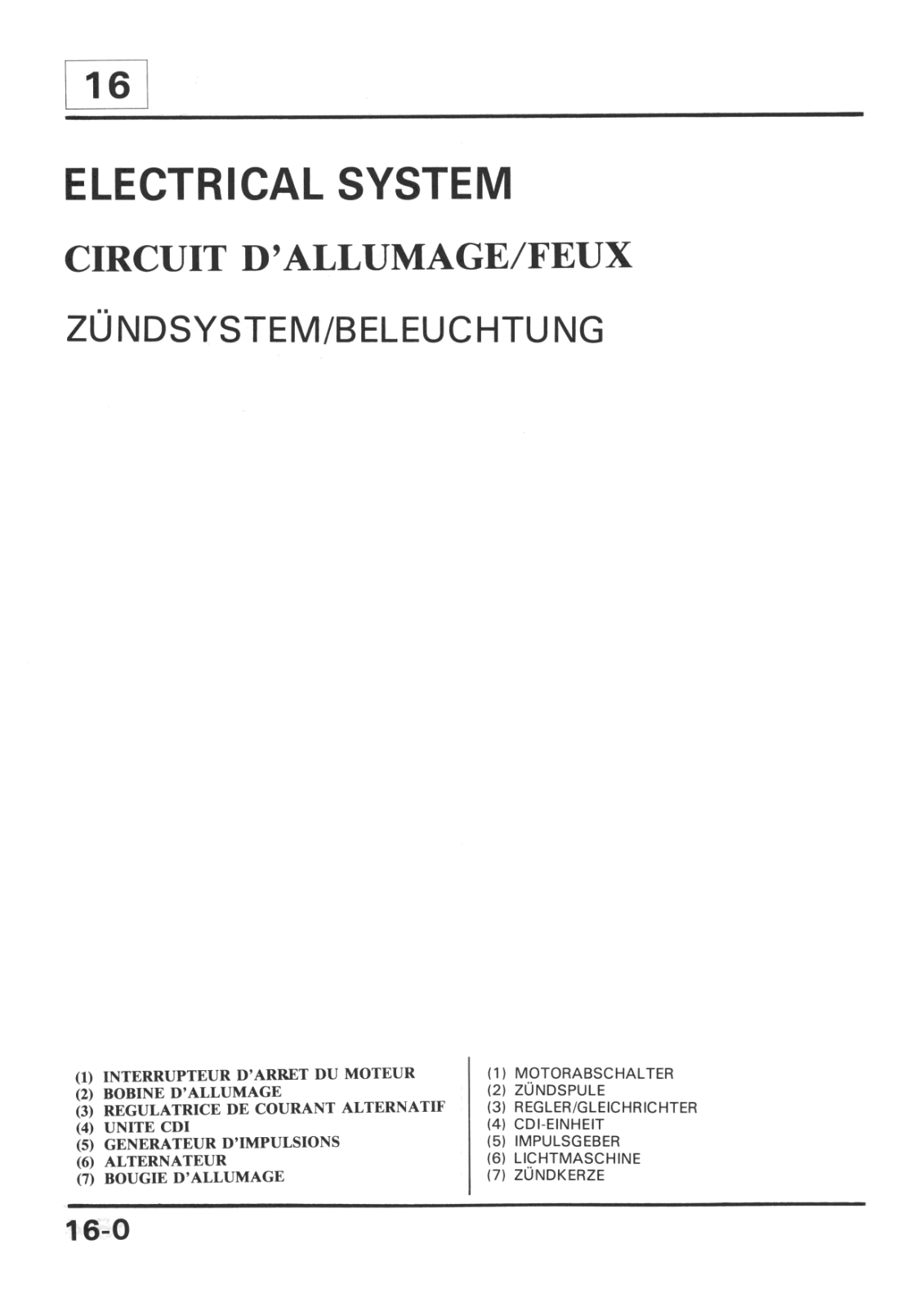
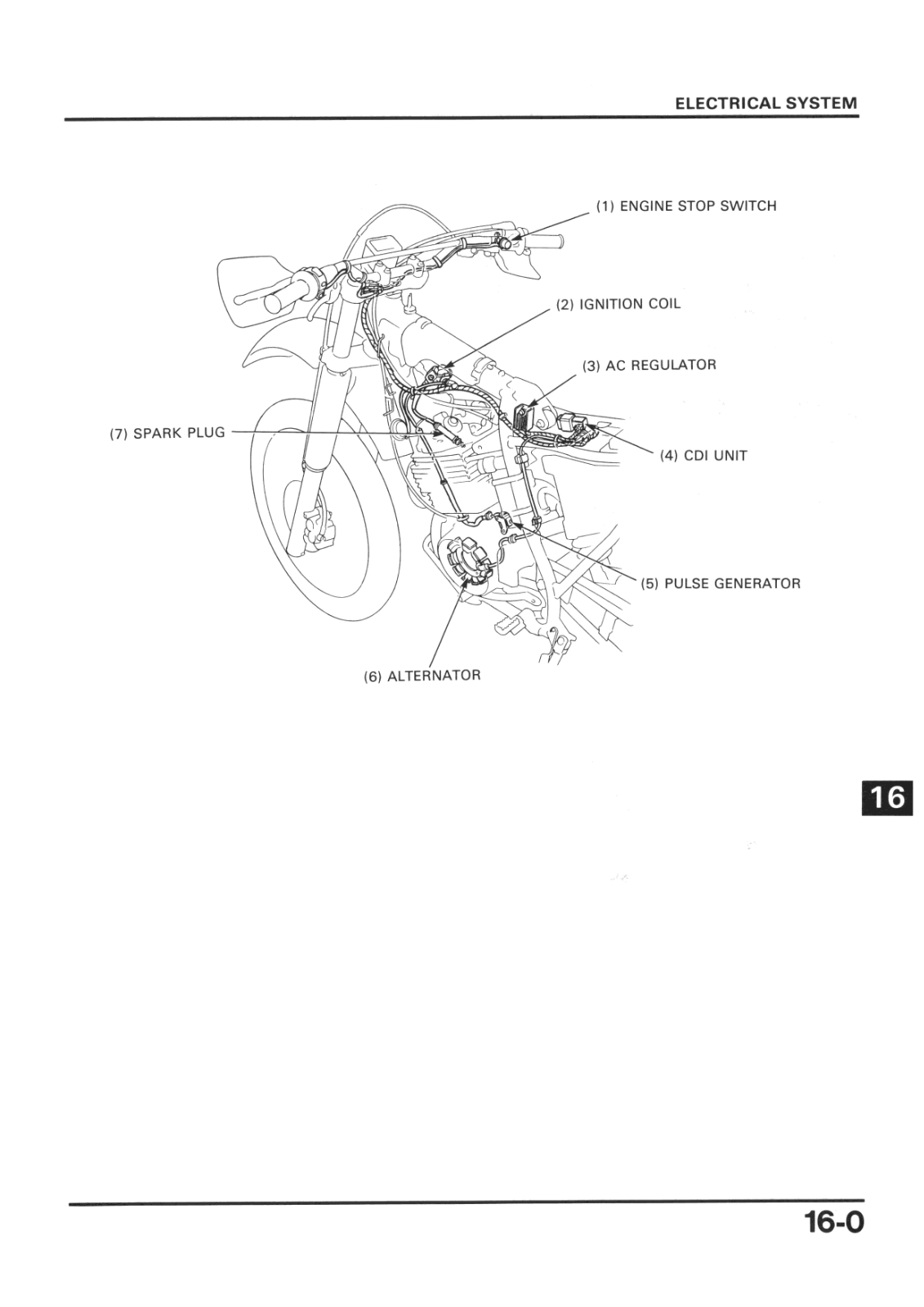
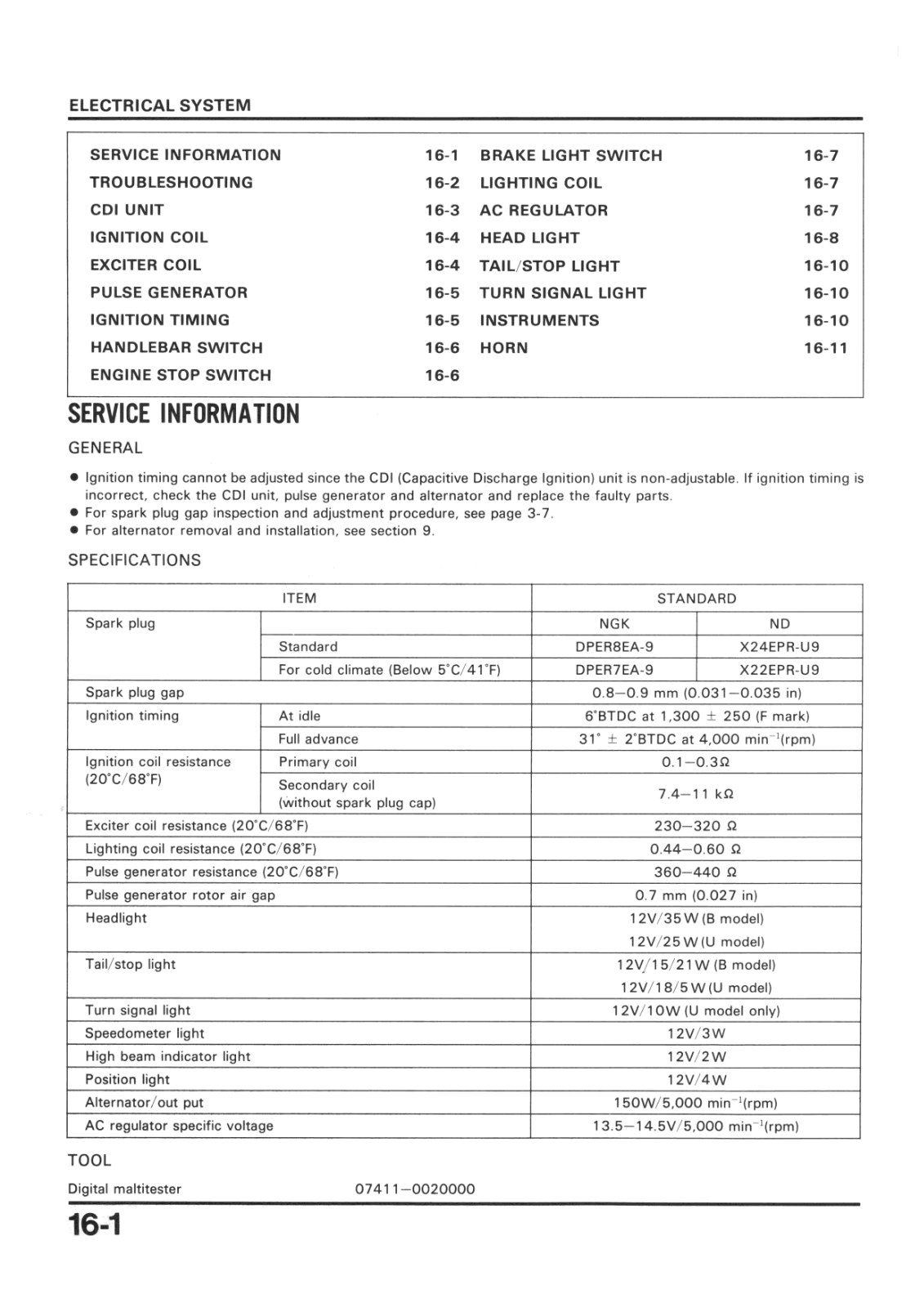
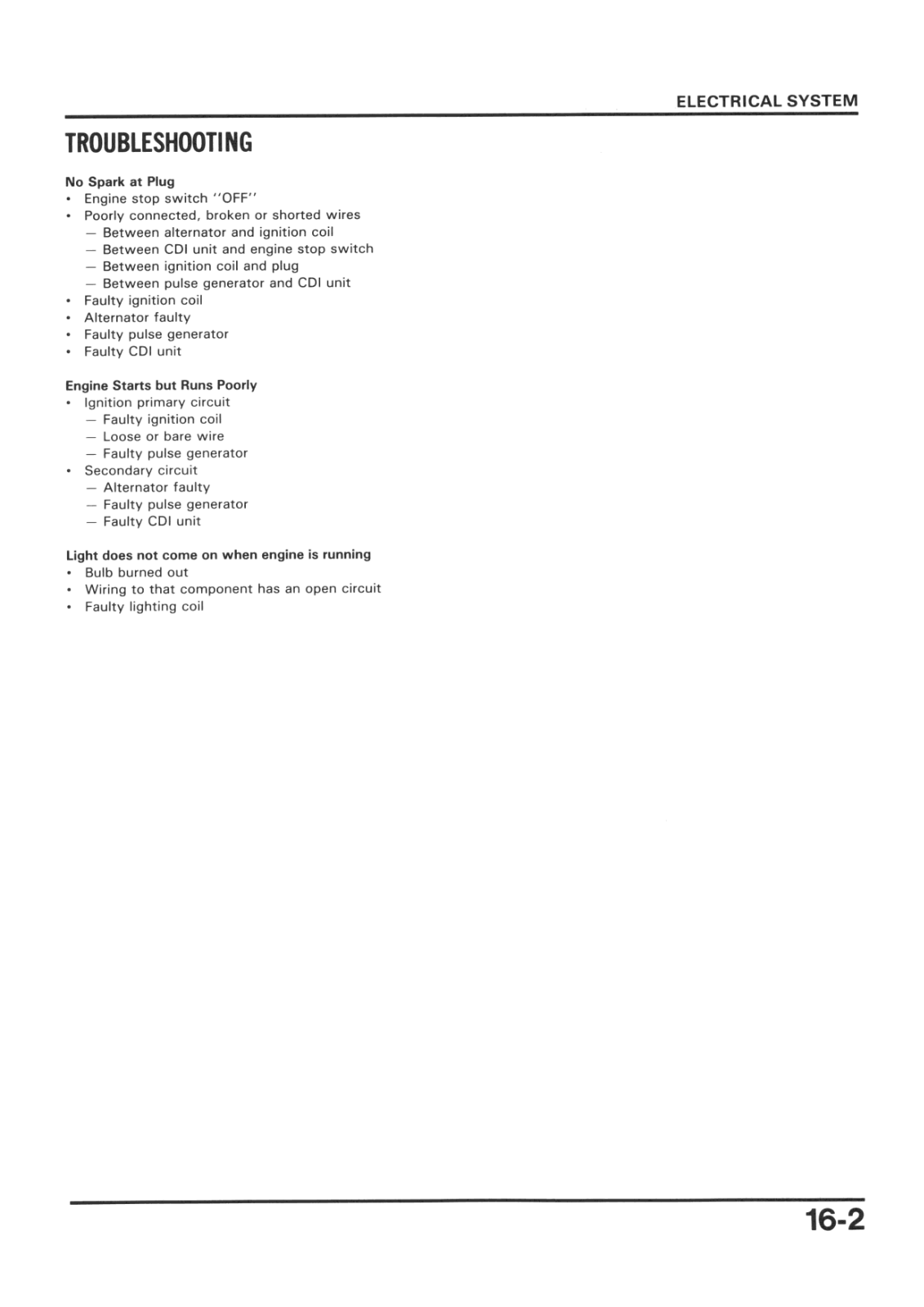
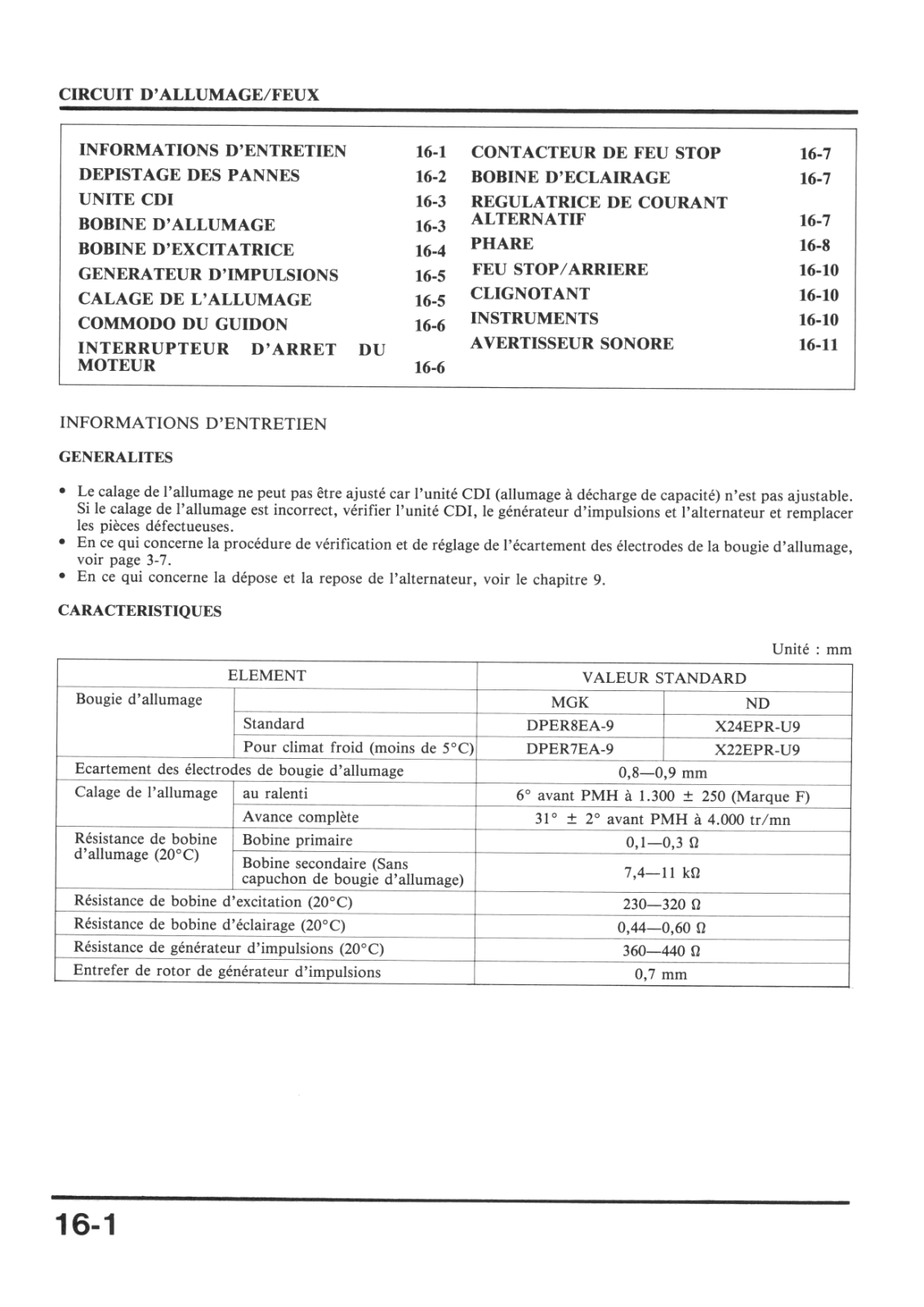
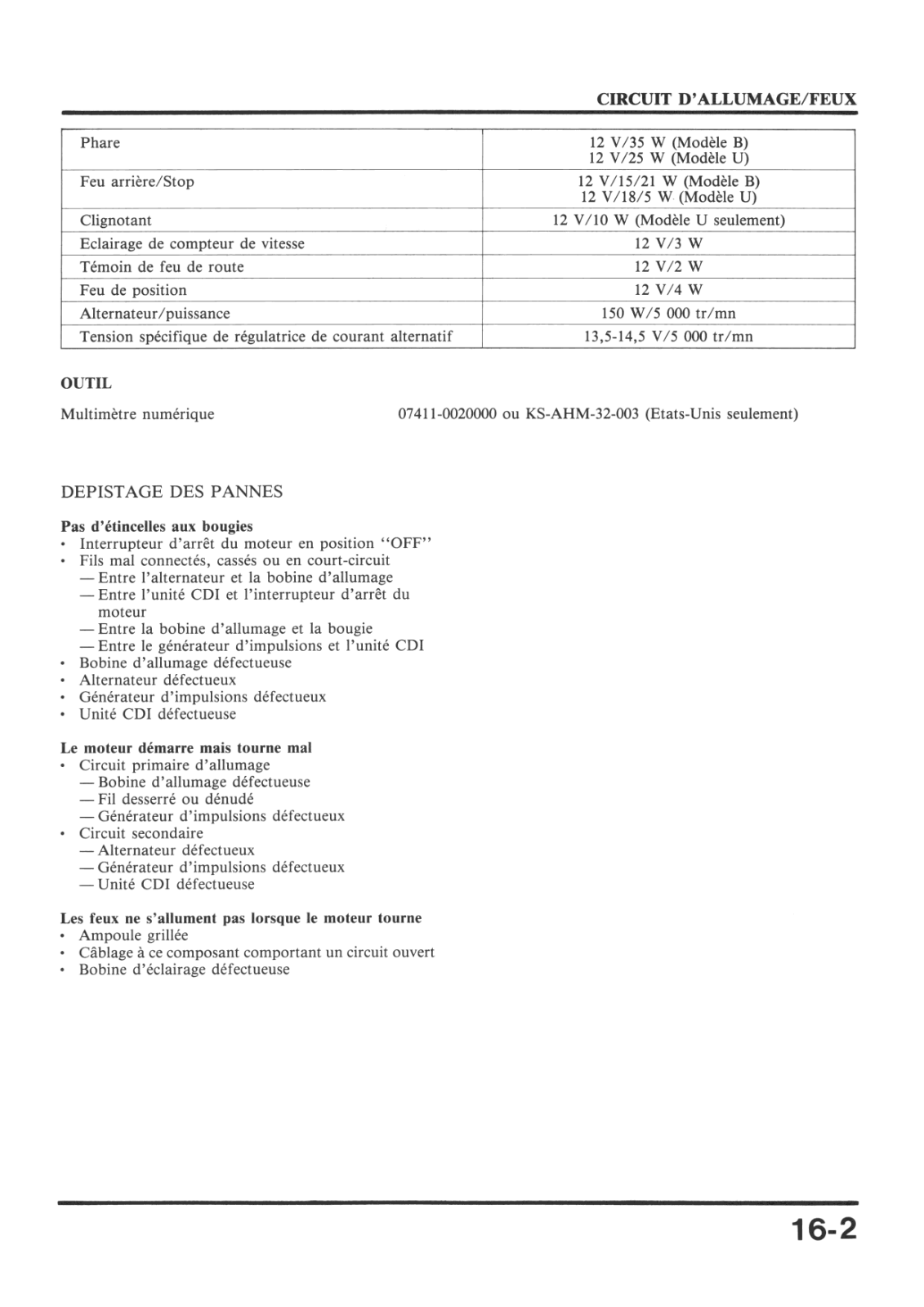
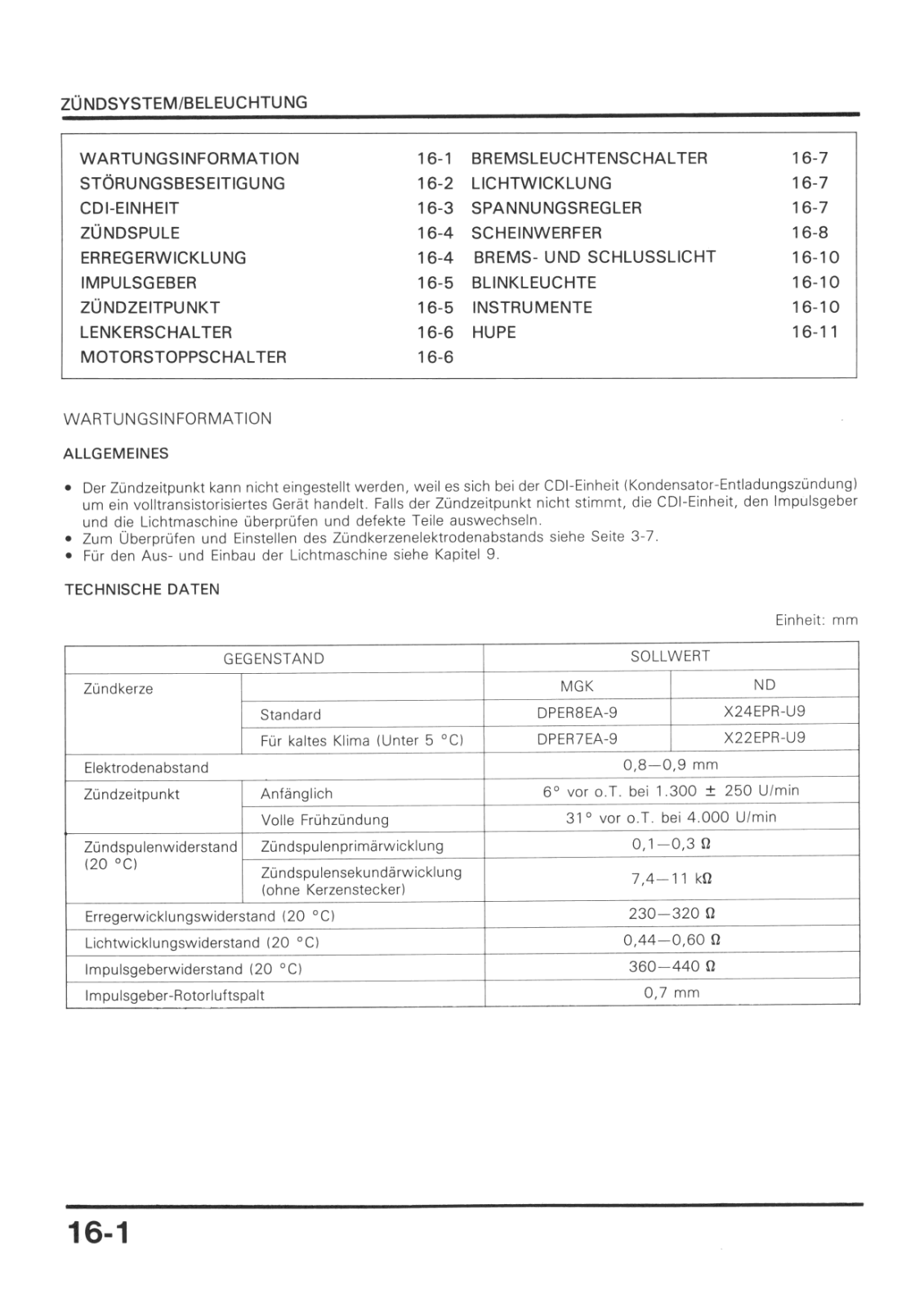
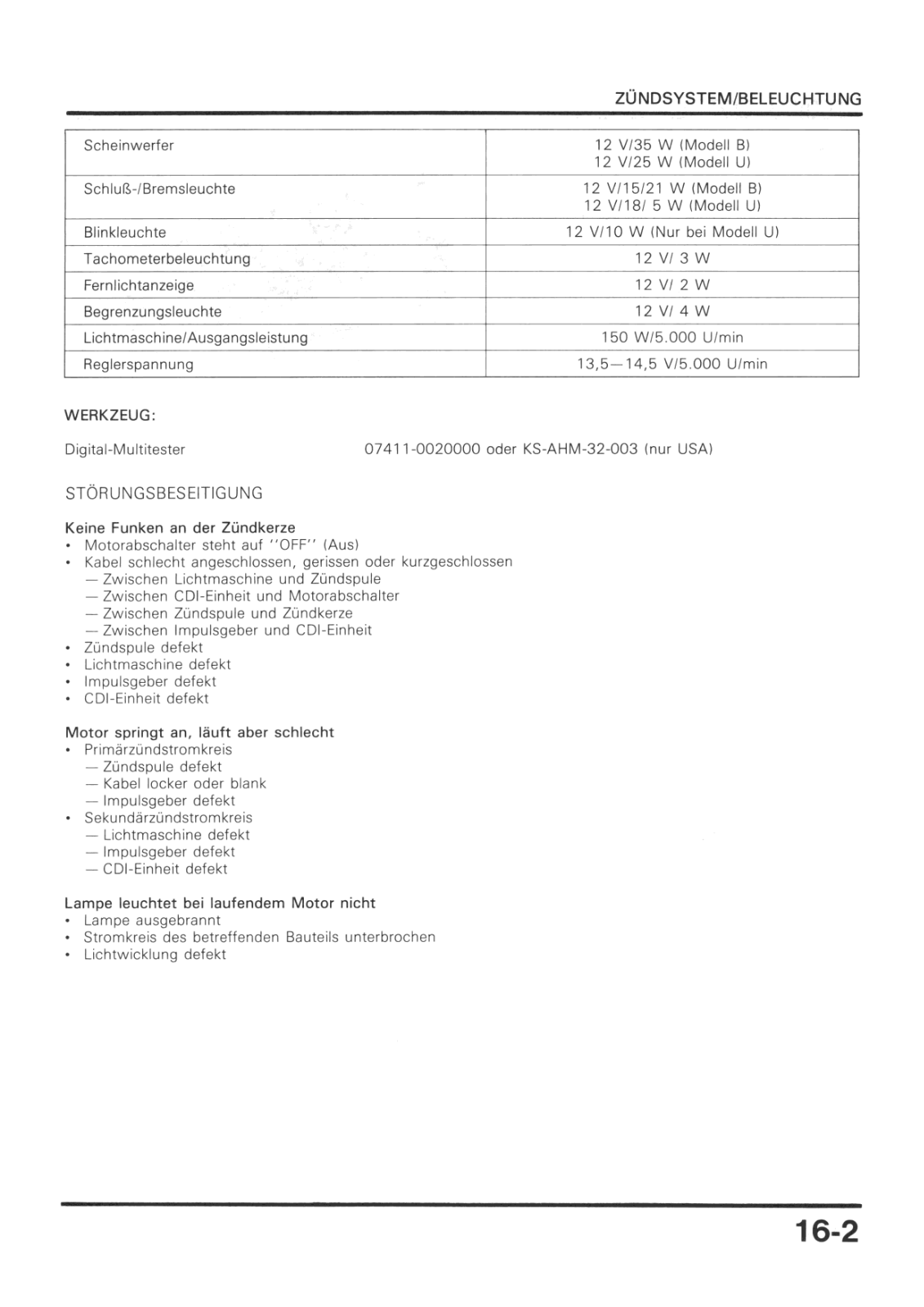
